#repurposed material furnishings
Explore tagged Tumblr posts
Text
Urban Woodshed

Website: https://www.urbanwoodshed.com
Address: Saskatoon, Saskatchewan, Canada
Urban Woodshed specializes in creating unique, handmade home décor items. The company's products, often crafted from repurposed materials like whiskey barrels and locally harvested timber, offer a blend of sustainability and style. They cater to those looking to add a touch of warmth and individuality to their living spaces.
Facebook: https://www.facebook.com/urbanwoodshed/
Instagram: https://www.instagram.com/woodshedurban
Keywords:
rustic home accents
whiskey barrel furniture
sustainable home accessories
nature inspired home accessories
nature inspired interior design
creative home solutions
personalized home accessories
handcrafted wooden products
eco conscious interior design
handmade home decor
repurposed material furnishings
custom decor pieces
whiskey barrel creations
local timber products
unique home styling
eco friendly dcor solutions
artisan crafted home items
bespoke wooden dcor
sustainable living dcor
eco conscious home styling
unique interior decorations
artisanal home furnishings
locally sourced dcor
handmade wooden accents
reclaimed wood home dcor
custom designed furnishings
sustainable living accents
eco friendly home styling
local craftsmanship dcor
unique sustainable furnishings
repurposed wood creations
custom made home accents
artisan designed home items
wooden dcor craftsmanship
sustainable living accessories
whiskey barrel home pieces
nature themed home styling
local artisans home goods
handcrafted sustainable items
reclaimed timber home accessories
bespoke sustainable furnishings
artisanal woodwork for homes
locally crafted interior dcor
creative wooden home solutions
eco friendly custom designs
rustic handmade home items
personalized sustainable living
whiskey barrel home accents
nature inspired custom pieces
saskatoon handmade home dcor
sustainable home accessories in saskatchewan
repurposed material furnishings saskatoon
custom decor pieces saskatchewan
whiskey barrel creations in saskatoon
local timber products saskatchewan
unique home styling saskatoon
eco friendly dcor solutions in saskatchewan
artisan crafted home items saskatoon
rustic home accents saskatchewan
bespoke wooden dcor saskatoon
personalized home accessories in saskatchewan
sustainable living dcor saskatoon
eco conscious home styling in saskatchewan
unique interior decorations saskatoon
handcrafted wooden products saskatchewan
creative home solutions in saskatoon
artisanal home furnishings saskatchewan
locally sourced dcor saskatoon
nature inspired home accessories in saskatchewan
handmade home dcor near me
sustainable home accessories near me
repurposed material furnishings near me
custom decor pieces near me
whiskey barrel creations near me
local timber products near me
unique home styling near me
eco friendly dcor solutions near me
artisan crafted home items near me
rustic home accents near me
bespoke wooden dcor near me
personalized home accessories near me
sustainable living dcor near me
eco conscious home styling near me
unique interior decorations near me
handcrafted wooden products near me
creative home solutions near me
artisanal home furnishings near me
locally sourced dcor near me
nature inspired home accessories near me
#rustic home accents#whiskey barrel furniture#sustainable home accessories#nature inspired home accessories#nature inspired interior design#creative home solutions#personalized home accessories#handcrafted wooden products#eco conscious interior design#handmade home decor#repurposed material furnishings#custom decor pieces#whiskey barrel creations#local timber products#unique home styling#eco friendly dcor solutions#artisan crafted home items#bespoke wooden dcor#sustainable living dcor#eco conscious home styling#unique interior decorations#artisanal home furnishings#locally sourced dcor#handmade wooden accents#reclaimed wood home dcor#custom designed furnishings#sustainable living accents#eco friendly home styling#local craftsmanship dcor#unique sustainable furnishings
1 note
·
View note
Text
When we think of sustainable materials, bamboo, cork, recycled stone and reclaimed teak often come to mind. These building and surface materials are used extensively in both residential and commercial projects, enough to solidify them as the eco-friendly future of established architectural practices.
But what if we went even further? Creative and experimental designers worldwide are embracing much more unusual sustainable materials in a wide range of projects, be these sturdy floorboards and insulating panels, or small-scale decorative elements such as lamps, trays, vases and other furnishings. With designs hailing from Singapore and Indonesia, as well as distant studios in Italy and Palestine, here are the materials of tomorrow.
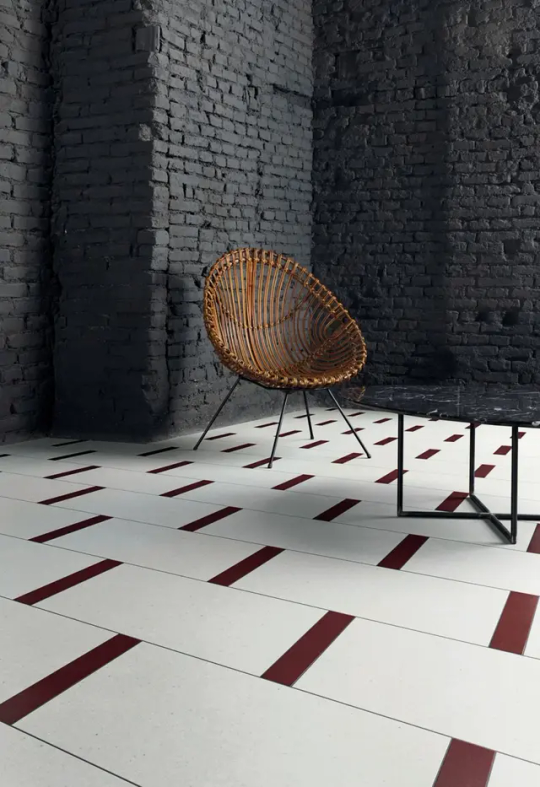
Mogu’s mycelium floor tiles
Mushroom filaments may not seem like the sturdiest base for hardwearing floors, but the Italian designers behind Mogu would argue otherwise. Transformed into resilient tiles appropriate for luxury residences and even commercial spaces, the mycelium structure is topped with a layer of bio-based resin, granting it resistance to scratches and abrasions rivalling traditional flooring materials.
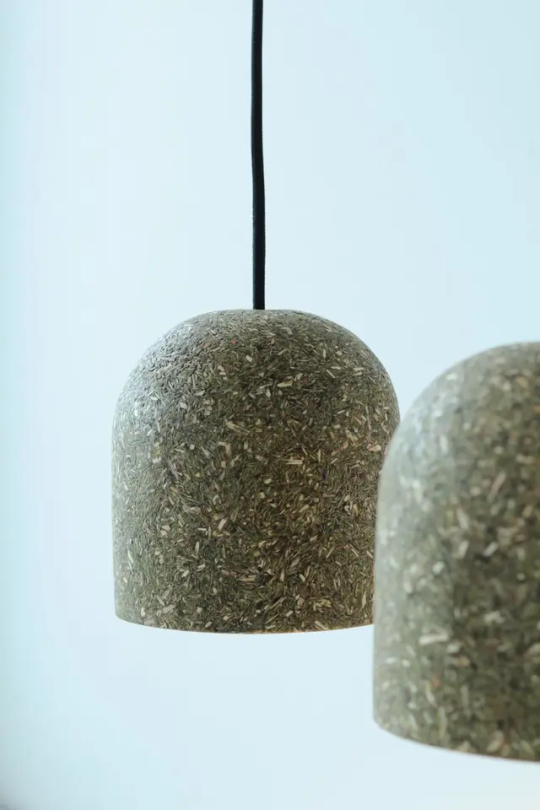
Orange peel and pine needles make up the sustainable lampshades by Caracara Collective
Turning orange peel into useable furnishings and décor pieces is no small feat, yet the people behind the circularity-focused Caracara Collective in Finland have mastered this singular art. Inspired by the abundance of the natural, inherently sustainable materials around them, the designers created a series of lampshades made of orange peel, as well as pine needles from discarded Christmas trees.
As the collective puts it: “It takes around 20 squeezed oranges to create one lampshade. In other words, each lampshade is the by-product of someone drinking two litres of orange juice.”
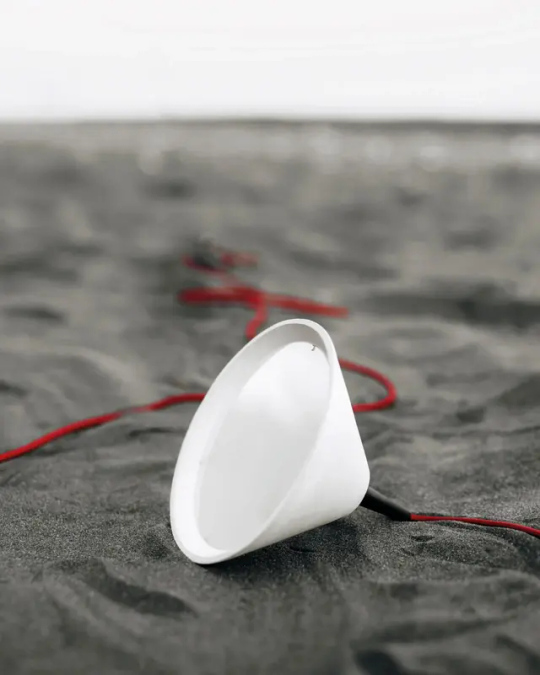
Markos Design’s Ostra lamp, made of discarded oyster shells
Discarded oyster shells are similarly repurposed on the island of Cyprus, transformed by Markos Design into Ostra, a ceramic-like biomaterial. Ostra is worked into statement lamp designs, naturally hardwearing thanks to the oysters’ high concentration of calcium carbonate, which also lends cement and concrete considerable strength.
#solarpunk#solar punk#reculture#solarpunk aesthetic#eco-design#materials innovation#solarpunk futures
139 notes
·
View notes
Text
Jericho's Upcycling - Galley-La and Lifestyle!
Hello! I must start by saying, I don't expect anyone to be well-versed in my oc-lore. I like to write about it in a way to archive my ideas, and if people are interested or curious, that's a bonus! Jericho didn't like feeling like a 'patient in care' when living in the Revolutionary Army HQ. She was rescued from a community service prison (now abbreviated as a BMBD by the RA, Black Market Business Directory, where prisoners partake in 'community service', but are actually rented out as pawns for criminal activity and any other other services that brought in money) after it was discovered she was being preserved to be eaten. (The discovery of Jericho's fate also initiated the investigation into the BMBD as an illegal establishment) Her, uh, mentor? Named Rabba Dakki (my OC) Recommended her to board on at Galley-La, his mate Iceburg wasn't open to just anyone, of course, but Jericho offered her unique skills in up-cycling to Iceburg (as opposed to ship building and carpentry.) An opportunity to save materials, and in turn save money. That's good for any company, so at the expense of providing her accommodation in his office, Iceburg took Jericho on board as head of recycling. Well, she was the only one working in recycling, so. You know. She's the head of it now, I guess. Good for her. The job was perfect for her, she was able to provide hands in a team based environment whilst still remain in her own solitude. A little recycling ward, scraps piled and organised by material, screws and lids in little boxes. Wood was often mended with screws or reduced to woodchip to repurpose, ready for use for carpenters. Not one piece of wood went to waste with Jericho around! Her own little kitchenette, complete with a kettle and teabags; a huge wash basin she built herself to clean dirty materials and tools (she spent a lot of time inspecting complicated, seemingly mundane structures at the BMBD prison, the pipes of the public showers were exposed, so she was able to fully understand it's mechanisms). A textile suite, usually for repairs of ship sails, but Galley-La workers would sometimes deposit torn garments there.

Jericho loves the process of up-cycling, taking junk and transforming it into something to adorn the surroundings or something useful. It surrounds her life, incorporating it into her own habitats. Though, she can be very stubborn about throwing away items that still have use in them, like a 10 year old pillow that is yellowing from sweat: "Well, it is still comfortable for sleeping, is it not?" A lot of her rooms furnishings are mismatched and clash slightly with the variety of patterns, she isn't fussy, but the final image as a result in this is somewhat charming. Her furniture is an accumulation of second hand items, things she has found in scrap heaps and bits she just can't let go of no matter how battered and destroyed. Possibly a minimalists worst nightmare.

TLDR:
jericho's main word is: resourcefulness
she hates wasting things
she hates getting rid of things that are still functional just because they no longer suit an aesthetic
of course, this ties into her being a vulture (devil fruit), they eat the scraps of animal fall, they're naturally resourceful creatures
she believes every scrap has another use!! and she will find a purpose for a piece of junk to serve!
(extra) she's not keen on opulence, she much prefers rustic, simple, maximalism. to her, opulence gives the impression of needless luxury

get this guy outta here bro
14 notes
·
View notes
Text

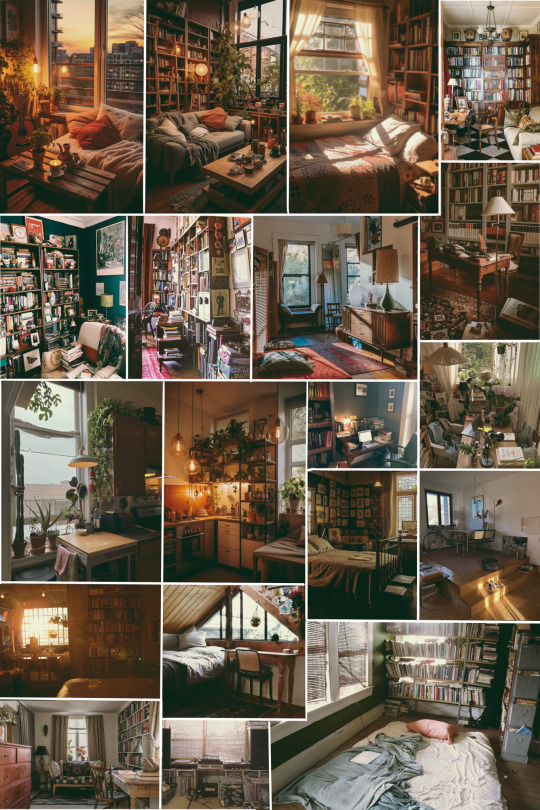
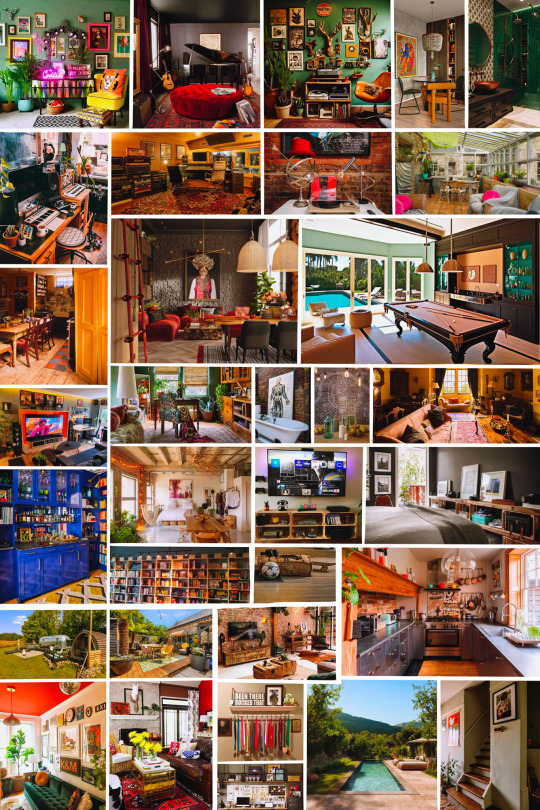

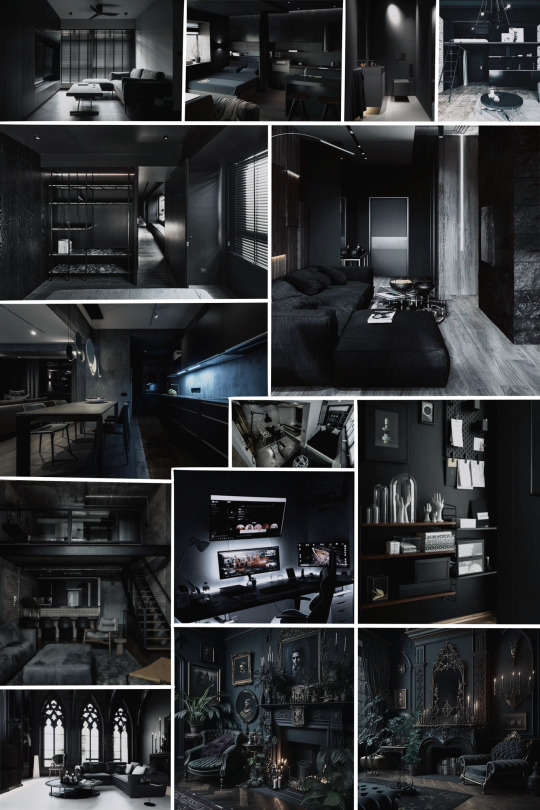
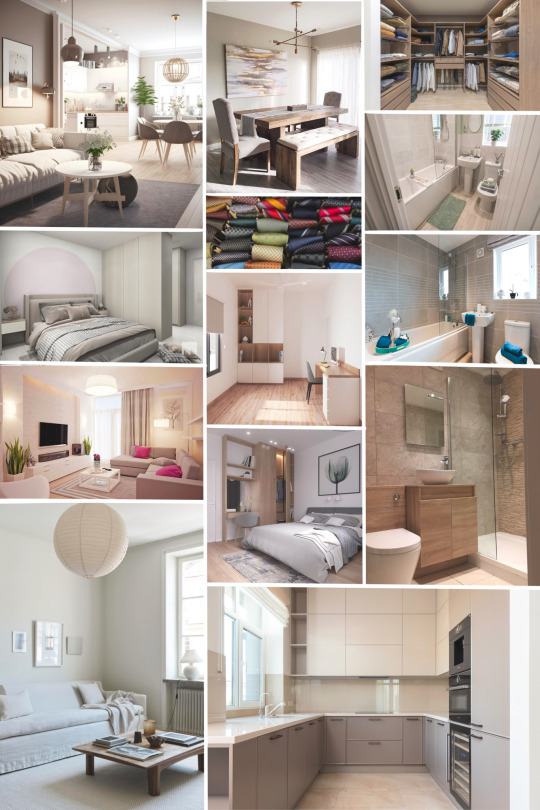
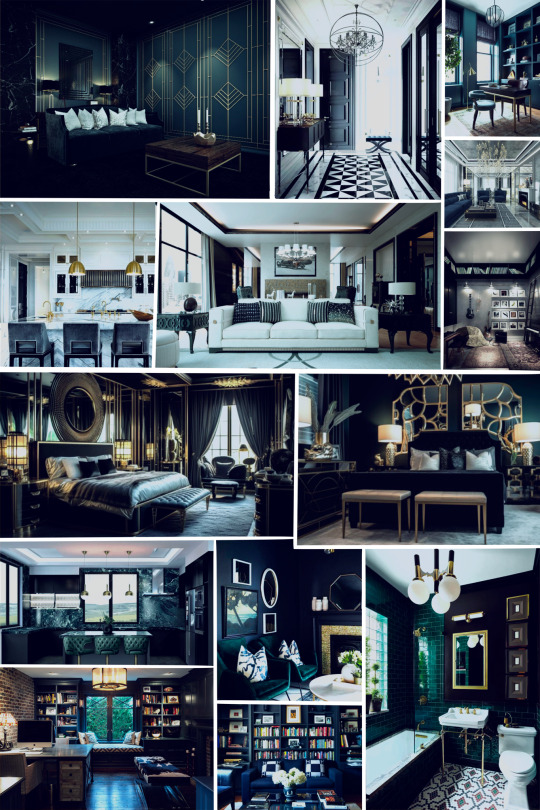
Marauders x interior designs, reference boards and a long post below with explanations on the style selection and living conditions! (1.6K words)
Sirius
Interior design style: Industrial
Style rationale: cool, dark tones with a stylish mixture of rough materials: bricks, concrete, metals, and a great view. The ambiguity of the manmade hardware meeting all the natural light from the large windows; the grand spaces suitable of hosting a lot of people paired with an arrogant, unwelcoming (scary even) atmosphere. Overall powerful masculine energy with edgy, rebellious vibes. Effortlessly stylish, oozes confidence, creative and commands authority. Not everyone’s cup of tea, only a few can see the appeal and the endless possibilities of this multipurpose factory building, which is capable of way more than originally intended for.
Residence characteristics: Penthouse, 4 bedrooms, 4 other purpose rooms, 2.5 bathrooms, rooftop terrace. Renovated/repurposed old factory building in the city, with a pub/night club downstairs, and the middle part of the building leased as office area. Sirius is the only one who actually lives in the building, which he also owns. (Meaning no neighbours!) The building has a cargo lift, which Sirius uses to park his motorbike on the rooftop garage area. A separated part of the rooftop area is used by the pub/nightclub as a warehouse/storage, the other open-air part of it is used solely by Sirius, that he can access directly from his apartment too.
Remus
Interior design style: Eclectic (unintentional)
Style rationale: cramped with books and various interesting artifacts, second-hand mismatched furniture, light academia aesthetic, overall nerdy hipster energy. Warm earth tones, once vibrant but now faded colour palette. Budget and function over style attitude. Cozy and welcoming vibes (people pleaser much?). Plant enthusiasm.
Residence characteristics: tiny 1 bedroom apartment, 1 bathroom, small French balcony (used as a herb garden). Remus is on a very tight budget, when he managed to buy the flat, he only had a mattress, two makeshift bookshelves and a table with two chairs the previous tenant had left there. He saved up for years to get a nice and fully functioning modern kitchen, but other than that, the apartment is furnished with antiques he inherited from or was gifted by old relatives. He has way too many books, and he treasures everything he gets as a gift from others, however useless the item is. He is a moderately successful plant dad, because his neighbour's cat somehow always manages to destroy his little balcony garden. All but one of his neighbours are elderly citizens, who all find Remus a very polite and kind man – completely unaware that he is the one who loudly plays the guitar/cello and not the only other younger person in the building. Remus feels no obligation to dispel their misconceptions.
James
Interior design style: Eclectic (intentional)
Style rationale: Big personality, vibrant, bold colours. Proudly presents their identity and personal accomplishments. Extroverted, creative, chaotic, but fun energy. Warm and welcoming atmosphere with rustic wood elements paired with the collection of random objects. Overall very lively and artsy vibe. Can easily labelled as too much and pompous. It takes some time to see through the flashiness to discover the deep devotion to honoring (ethnic) heritage, familial ties and loved ones behind all the showcased extravaganzas.
Residence characteristics: Large family house in the suburbs, 4 bedrooms, 2 bathrooms, 4 other purpose rooms, terrace, pool, 1 barn, 1 garage, 2 acres of land. James has never really moved out from Potter Manor, as he went to boarding school and inherited the property from his parents a little after graduation. He deeply loves his home and respects his heritage and memories a lot, but he is too much of a character to resist tailoring parts of the house and the interior to his taste. He has a collection of unconventional things (street signs, vinyls, tire rims, Liverpool sports memorabilia, cold war era propaganda posters, maps, festival tickets, foreign label beer cans, etc.), proudly presented alongside his sports trophies, medals, and musical awards. He thrives for the company of others, therefore the house could easily serve as an entertainment centre: he has the biggest of TVs, all gaming consoles, the widest variety of board games, a pool & foosball table, a pool in the garden alongside professional grill and cocktail bar equipment. He also has a fully functioning, soundproofed professional level studio in his basement with a lot of musical instruments and sound engineering & recording equipment. He has a treehouse and an old VW minivan repurposed as a summer guestroom in the garden. Sirius has his own dedicated bedroom, which is left untouched (just as the room of James’ parents).
Lily
Interior design style: Boho Chic
Style rationale: Girly, playful, kind. Plants, plants, plants everywhere, embracing the closeness to nature, fun textures, floral patterns, personally significant items. Non-conformist, free-spirited energy. Quirky, yet tasteful décor with an overall earth toned and pastel colour palette. Pretty and functional furniture, lot of pillows and soft blankets. Sweet and floral scents, calm, cultured and cozy vibes.
Residence characteristics: studio apartment in the city, 1.5 bedrooms, 1 bathroom, balcony. Lily’s flat is located in a fast-paced, busy and a little unpleasant part of the city, but it is near her workplace and has easy access to several public transport options. Her balcony is facing the inner yard of the building, which she managed to bloom up with conscious effort for years against all odds and resistance of obnoxious landlords. She is friendly towards all of her neighbours - even that weird loner guy in that dark basement apartment, who somehow always have the perfect anti-bug compounds at hand and seems to be very fond of Lily only. She has shared the flat with her sister until Petunia moved in with her fiancé, Vernon. Her bedroom was transformed into a study room. Lily has a soft spot for vintage furniture and interiors, but in certain areas she values function over style. She keeps her apartment tidy and organized. She is the most successful plant mom, who dreams about having her own garden.
Peter
Interior design style: Contemporary
Style rationale: Beige and gray color palette, designed to be average enough to appeal to the widest possible range of people. The go-to style of every home stager or AirBnB property owner. Clean, basic, convenient, a little boring even. Interior design lacks personality, the selection of the decor elements is usually driven by fitting the general aesthetic and looking luxurious and not by personal preference. Bland and plain vibes. Looks functional and comfortable and can easily hide structural or other problems with the apartment with clever selection and placement of often built-in furniture that the new owner won’t notice the issues until it’s too late.
Residence characteristics: newly built apartment, 1 bedroom with large walk-in wardrobe, 1 bathroom, dedicated underground parking space. Peter made a great deal with his apartment: he could buy the flat at the best and most early bird discount price after he was informed about the planned real estate construction project by overhearing a conversation regarding the status of obtaining the necessary building permits. He paid in advance the full amount determined in the planning phase of the project, and by the time the construction was finished, the apartment has tripled in value due to inflation rates skyrocketing. He moved into the turnkey property and hasn’t changed a thing ever since. The only pop of colour and testament of his real personality is his walk-in wardrobe and collection of quirky ties.
Snape
Interior design style: (Dark) Minimalist, partly gothic
Style rationale: dark, organized, focused. Basic shapes and textures, simple materials, little to no decoration to ensure lack of stimulation and distractions. Less is more attitude. Can be frustrating to others, but held in high regards by likeminded people. Monochrome, desaturated, mostly black colour palette. Unpleasant, unsettling, overwhelming, bleak, well-structured and functional. Unparalleled practicality. A vibrant colour or boho item would look very out of place, and would eventually lose its brightness and liveliness because the minimalist environment will slowly oppress it with its own defining features. Unwelcoming, not interested in others (and a little depressing) vibe.
Residence characteristics: small 1 bedroom basement apartment, 1 bathroom, exclusive access to cellar area of the building. Snape is overly organized, values function over design. He finds the brutal simplicity of his interior soothing and calming, and prefers practicality over flashiness. He is comfortable in his gloomy flat, which is tailored to his needs only. No guests are expected ever. He utilizes the full cellar area of the building for his own purposes, (probably) rent free. No one knows exactly what he does there, but as he has a repelling enough aura around him, they rather don't bother him. He hates all his neighbours with burning passion, except that nice redhaired girl adamantly trying to make a pretty indoor garden in the building's yard. The only actual colour and decoration in his apartment is a peace lily in a bright green pot, that was gifted to him by Lily. He secretly likes the magnitude of gothic buildings and started to admire their aesthetic value as he spends a large amount of time in a gothic environment (dark academia vibes!) for his day job.
Regulus
Interior design style: Art Deco
Style rationale: expensive, luxurious, fancy. A more modern and trendier take on the traditional, 18th- and 19th-century European interior design style of Grimmauld Place.
Residence characteristics: large apartment in The City, 2 bedrooms, 4 other purpose rooms, 3 bathrooms, balcony. Regulus got the flat as a graduation present from his parents, neither the location or the interior design was his choice, but was happy to move there (the assumptions regarding his style preferences were spot on). However, he spends more time at his family home than his own, as he likes the company of their family's butler, Kreatcher too much.
Some links: more thoughts about Sirius and Remus' interior preference; lineart and coloured art of Sirius in his flat.
Bonus: basic floorplan of Sirius' flat I made in Paint. It's probably not scaled right, and I'm not sure if it's plausible in an architectural point of view, but I imagine it to be something like this:
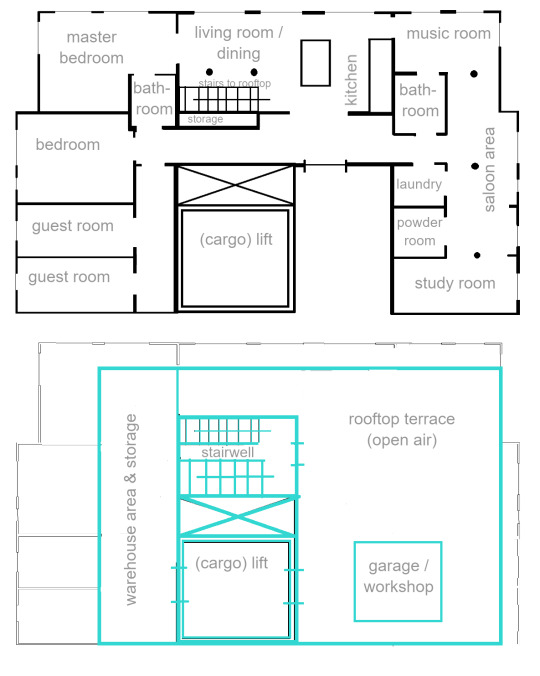
If any of you is an actual architect or is more skilled in 3D rendition, I'd be forever grateful if you could pick up my design!😘
#sirius black#remus lupin#james potter#lily evans#peter pettigrew#severus snape#regulus black#marauders#reference boards#headcanons#lau doesn't write because of reasons#rockstar au#modern au
26 notes
·
View notes
Text
Siheyuan 四合院

The sprawling traditional Chinese courtyard home, known as the Siheyuan features several buildings built around a series of courtyards.
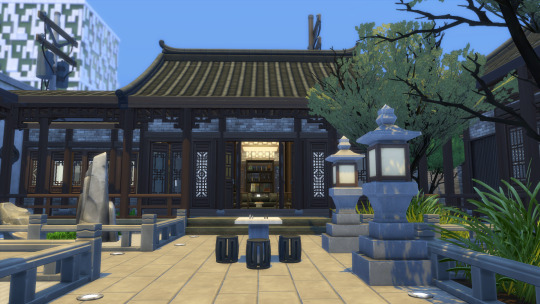
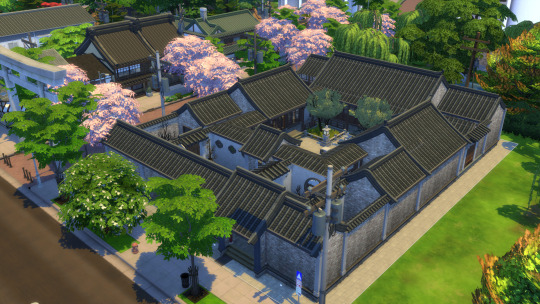
The main door of the Siheyuan is usually located in the lower south corner of the house, and opens to a forecourt that leads to another centrally located doorway that leads to the house proper. This stops passersby from being able to look into the main spaces of the house.
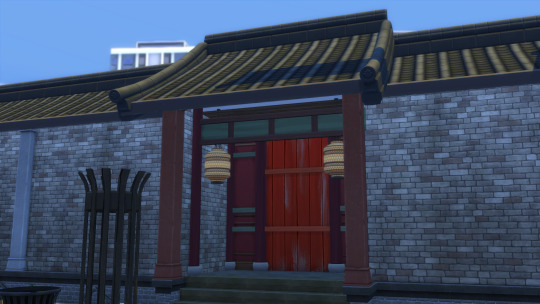
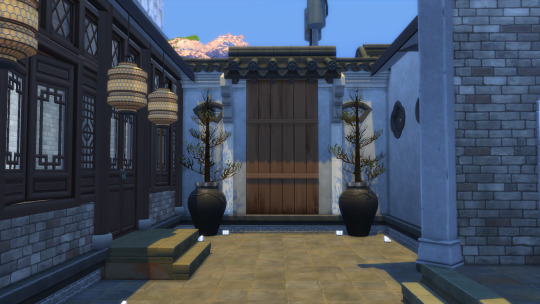
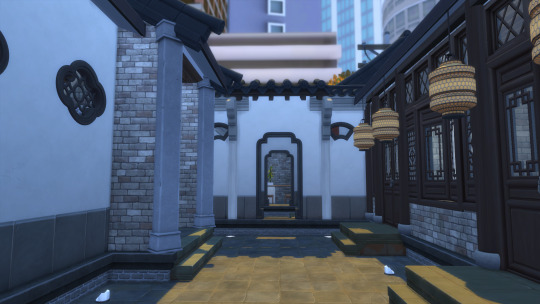
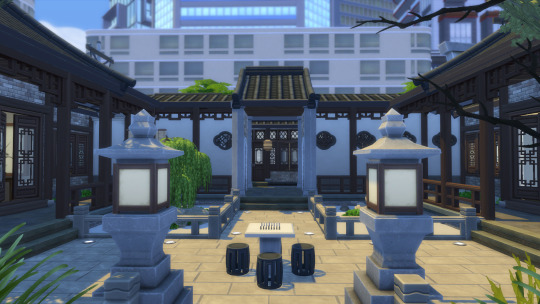
This property, known as the Austere Official's Home, has been restored and given a modern facelift, while still in keeping to its classical roots. Much of the home's layout is based on ancient beliefs of how energy moves in a space, while the overall home itself represents the Chinese obsession with walled spaces, with a Siheyuan often consisting of walls within walls of walled yards, gardens and liminal spaces, connected by a covered walkway.
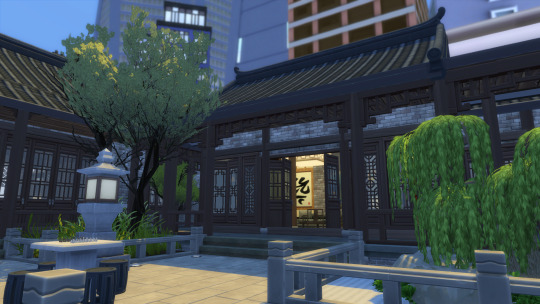
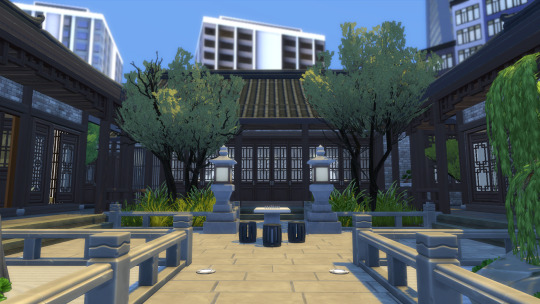

Contemporary Chinese interior design is a fascinating design niche, that can draw on design principles and material use anywhere from the Qing to the Han Dynasty, and Chinese aesthetics can be anywhere from ostentatious and overwhelming to refined and restrained.

Many associate Chinese interior aesthetics with red lacquer, silk furnishings, whimsical carpentry and gilded surfaces in excess but more often than not, classical Chinese interiors are more likely to feature more sedate tones of dark grey, black and deep brown, with hardwood furnishings in clear lacquer, with grey brick walls. or white plaster walls, as well as stone floors and granite paved exterior spaces.
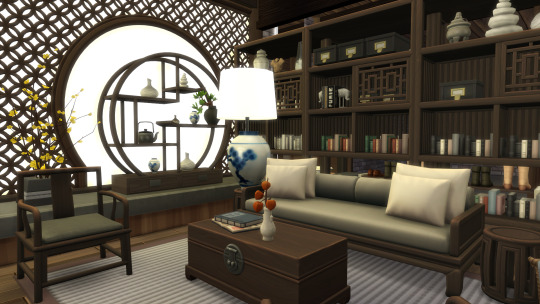
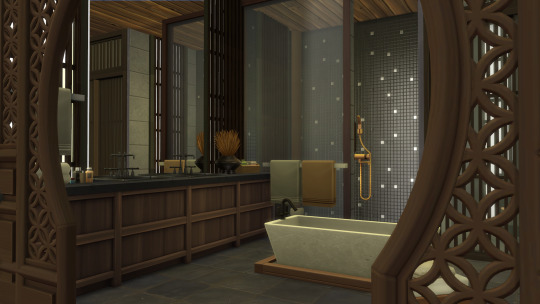
The Austere Official's Home's makeover is based on a popular movement in Chinese interior design that draws on more consistent and refined use of materials and colours, with a recognisably Chinese aesthetic, while incorporating more contemporary ideas on the usage of space. A style popular with hotels in particular, being fairly accessible to international palettes while still being "Chinese" in feel.
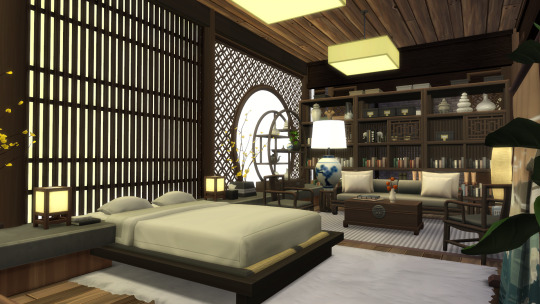

Many Siheyuans require a lot of retro fitting and renovation to match our modern use of interiors, however. For instance, classical Chinese homes did not have living rooms, or dining rooms, or in fact, rooms at all. Chinese architecture typically does not rely on load bearing walls to support the structure, and as such, do not have the division of space seen in Western builds. Chinese spaces are therefore riddled with supporting wooden columns, which are joined by dividing screens and folding doors that create the "rooms" of a building, with the whole carpentry being held down by a wonderfully heavy and graceful roof. This actually makes them fairly earthquake resistant structures.
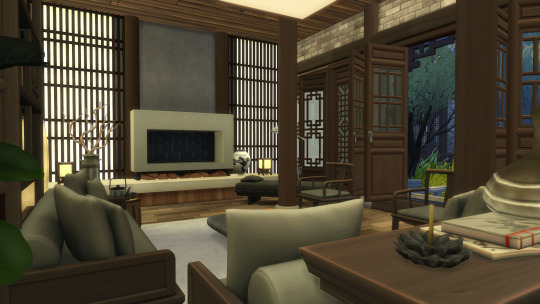
Typically this means a building in the Siheyuan is all encompassing in its function. It features a bedchamber, a study and a reception hall. Things like dining and ablutions are restricted to furniture and wherever they are placed. How this translates into a modern restored interior is interesting. For this build, much like a shell challenge I kept the structural pillars intact, while moving around the divider walls to reconfigure the space, while buildings can now be repurposed to house the rooms modern inhabitants would need.

Thank you for reading! 谢谢
29 notes
·
View notes
Text
Which interior style is usually the cheapest to implement: choosing from the 4 main ones
Many homeowners dream of a stylish interior, yet finances often guide their decisions. A well-chosen design can refresh a home and protect the budget.
This article reviews four popular interior styles and determines which one offers the most cost-effective approach.
Renovation expenses can surge if you pick the wrong approach. Selecting a practical style truly saves money.
Industrial Style

Industrial style features exposed brick, metal fixtures, and reclaimed wood. These elements often come from old warehouses. A Brooklyn loft with original brick walls, visible pipes, and secondhand metal chairs is a real example. Vintage lighting can raise costs, yet leaving surfaces untouched may lower labor expenses. Some homeowners incorporate large factory-style windows to bring in natural light and repurpose old lockers or metal racks as storage. These tactics often reinforce the raw appeal and keep spending within reason.
Scandinavian Style
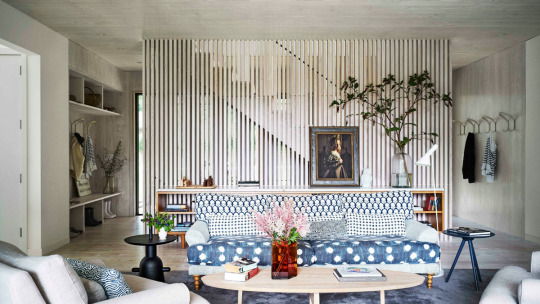
Scandinavian design centers on natural light, simple lines, and functional furniture. A small apartment in Stockholm with white floors, streamlined sofas, and birch tables illustrates this look. Neutral-toned rugs and practical storage units maintain a lower budget. Decorative blankets or houseplants add warmth without overspending. Homes in cities like Oslo or Copenhagen exemplify how clean layouts, subtle textiles, and small decorative accents can form a restful atmosphere. Many people appreciate the bright color palette that reduces the need for expensive lighting solutions.
Minimalist Style

Minimalist interiors showcase an open layout, limited furniture, and sleek surfaces. A Tokyo studio with nearly empty walls, a single sofa, and a low-profile bed shows this concept. Premium materials like smooth concrete can boost expenses, but DIY solutions and reused pieces are budget-friendly. Plywood shelves or basic white cabinets often balance costs. Large mirrors can amplify available light and reduce the number of lamps you might need. This approach suits individuals who value a clutter-free life and prefer simplicity over multiple accessories.
Rustic Style

Rustic style prioritizes rough-hewn wood or stone. A country cottage near the Alps might feature thick beams, hand-carved chairs, and a stone fireplace. High-quality timber raises prices, yet salvaged barn doors cut spending. Specialized carpentry can add cost. Some rural bed-and-breakfasts demonstrate how natural fabrics like linen curtains and wool rugs integrate well with rough wood surfaces. The overall result is cozy, but material sourcing may require patience if you want authentic pieces.
Costs, Examples, And Practical Lists
Costs hinge on materials, labor, and project size. Many people choose industrial or minimalist as affordable options, though local resources affect expenses. One homeowner in New England converted an abandoned warehouse into a chic industrial loft by acquiring secondhand fixtures at auction. Another individual in rural France renovated a barn in a rustic manner by salvaging aged planks from a nearby demolition site. Each approach balanced creativity with financial control.
Here is a list of factors:
Budget. Always confirm how much you want to spend.
Material sources. Pick local suppliers or secondhand items.
Skilled labor. Check availability of builders or carpenters.
Personal taste. Select a style that fits daily life.
These points guide interior planning. Evaluating local prices and existing spaces helps reveal the best style.
When trimming costs, consider these:
reuse older furniture;
repurpose leftover materials;
compare prices from different shops.
That approach can spark creative solutions, such as using a vintage door as a coffee table or leftover tiles as a backsplash accent.
Cheaper Style Verdict
Minimalist design usually ranks as the least expensive. It needs fewer furnishings, and many parts can be built with simple tools. Scandinavian can be similarly thrifty with basic items. Industrial becomes cheap with abundant reclaimed materials, and rustic can be affordable if old wood is on hand.
Renovation alone might seem tempting, but it's not an easy thing to do. An experienced team knows color schemes and structural nuances. E&A Partners offers professional guidance. Another option might be Johnson Interiors, which coordinates labor and furniture.
Points Worth Remembering
Minimalist style often ranks as the most economical choice. Industrial demands caution with sourcing, Scandinavian emphasizes light colors, and rustic relies on reclaimed treasures. Local resources, DIY tasks, and expert insights strongly influence final bills.
Practical Takeaways For Homeowners
Each style can look appealing without draining your savings. Minimalism typically stands out for lower costs, but other styles remain viable with smart planning. It is wise to review local conditions and pick labor methods that fit your goals. Professional designers can simplify decisions and boost confidence.
2 notes
·
View notes
Text
Rejuvenate Your Space: Amato Furniture’s Skill at Furniture Reupholstery in NYC
Rejuvenate Your Space: Amato Furniture’s Skill at Furniture Reupholstery in NYC
In the heart of New York’s volatile and always changing metropolis, it is crucial to maintain our living areas chic and welcoming. Furniture reupholstery is a revolutionary way to give your treasured pieces new life, whether they are cherished antiques or modern pieces that have seen better days. We at Amato Furniture are proud of our creative approach to reupholstering furniture in New York City. We go over the advantages of this craft in this tutorial, along with how our knowledge can breathe new life into your living area.
The Need of Reupholstering Furniture
Furniture reupholstery is a classic and environmentally friendly method that involves giving it a new lease of life by changing the padding and fabric and, if needed, updating or repairing the frame. Through this method, you can modernize and personalize your furniture to fit your changing tastes while also preserving its sentimental significance.
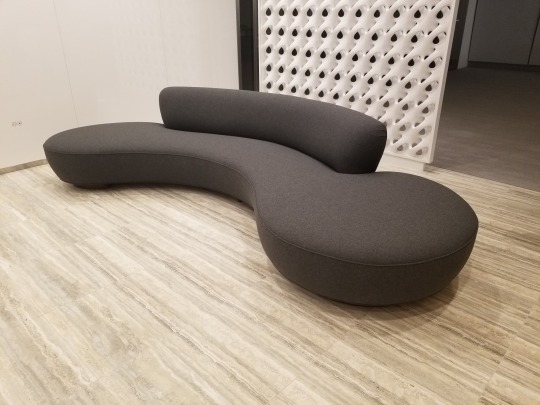
The Benefits of Selecting Amato Furnishings for Upholstery
1. Preserving Sentimental Value:
It is common knowledge that furniture has sentimental significance.
Each piece is carefully crafted by our talented artisans, maintaining its distinct character and background.
2. Personalization and Customization:
Select from a large selection of textiles to fit your tastes and style.
For a genuinely unique touch, customize the design components, such as the finishes and trims.
3. Environmental Sustainability:
Reupholstering furniture minimizes waste and uses less new materials, making it an environmentally beneficial option.
Come along with us to support a more conscientious and environmentally friendly method of outfitting.
4. Cost-Effective Alternative:
Replumbing furniture is frequently a more economical option than buying new.
Benefit from new and updated components without going over budget.
The Way We Work at Amato Furniture
1. Consultation and Assessment:
To talk about your vision and look into fabric alternatives, schedule a consultation.
Our professionals evaluate the furniture’s state and offer suggestions.
2. Customization and Fabric Selection:
A wide array of superior textiles, from traditional to modern, are available for selection.
Talk about the design features and customize the reupholstery to suit your tastes.
3. Craftsmanship and Attention to Detail:
Each piece is painstakingly reupholstered by our talented artisans.
In order to guarantee longevity and functionality, structural repairs are carried out.
4. Delivery and Placement:
We make sure your revived furniture is delivered and placed in your room on time when the reupholstery is finished.

Amato Furniture Will Take Your Living Area to New Heights
At Amato Furniture, we think that furniture should be timeless and a reflection of your personal taste. Our dedication to quality in NYC furniture reupholstery is based on sustainability, customization, and artistry.
Visit Amato Furniture to learn more about our offerings, have a look at our portfolio, and start the process of repurposing furniture to create a beautiful, artistic update for your home.
2 notes
·
View notes
Text
Affordable Interior Designers in Sydney: Luxury and Elegance on a Budget
When it comes to transforming your home into a stylish and functional sanctuary, finding the right interior designer in Sydney can make all the difference. Whether you’re looking for an affordable interior designer, luxury interior design services, or an expert in modern apartment interiors, Sydney is home to talented professionals who can bring your vision to life without breaking the bank.

Why Hire an Interior Designer in Sydney?
Many homeowners believe that hiring an interior designer is a luxury reserved for high-end properties. However, the reality is that professional designers can help you save time, money, and stress. Here’s how:
1. Maximizing Your Budget
An experienced affordable interior designer in Sydney knows how to source high-quality materials, furniture, and decor at discounted prices. Their industry connections allow them to access trade-only suppliers, helping you achieve a luxury look without the high-end price tag.
2. Avoiding Costly Mistakes
Designing a home without professional guidance can lead to expensive errors — whether it’s purchasing furniture that doesn’t fit, choosing the wrong color scheme, or mismanaging space. A skilled designer ensures every choice aligns with your budget and style.
3. Increasing Property Value
A well-designed home isn’t just visually appealing — it also boosts your property’s market value. Whether you’re planning to sell or simply want to enhance your living space, an interior designer can create a timeless and elegant look that attracts buyers.
Affordable Interior Design Solutions in Sydney
1. Budget-Friendly Interior Designers
Many talented cheap interior designers in Sydney offer stunning results without the hefty price tag. They specialize in cost-effective solutions like repurposing existing furniture, choosing multi-functional pieces, and using smart design techniques to make small spaces feel larger.
Top Tips for Affordable Interior Design:
DIY Decor: Combine professional design services with DIY elements like painting, rearranging furniture, and adding personal touches.
Second-Hand Finds: Many Sydney-based designers incorporate vintage and upcycled furniture for a unique and cost-effective aesthetic.
Minimalist Approach: A simple, well-organized space can be just as luxurious as an extravagant one.
2. Luxury Interior Design Services on a Budget
Want a luxury home interior in Sydney without the excessive price tag? Many designers specialize in high-end aesthetics while keeping costs manageable. They focus on key elements that create a premium feel, such as:
Statement Lighting: Chandeliers, pendant lights, and sconces add a touch of opulence.
Premium Finishes: Using high-quality materials sparingly, such as marble countertops or brass fixtures, can make a space feel upscale without a full renovation.
Custom Furnishings: Tailored pieces can be surprisingly affordable and add a unique, high-end touch to your home.
3. Elegant House Interiors in Sydney
Elegance doesn’t have to mean expensive. Many Sydney interior designers create refined, timeless interiors with a focus on neutral tones, soft textures, and strategic lighting. Key elements of an elegant home include:
Soft Color Palettes: Beige, white, pastels, and muted grays create a sophisticated atmosphere.
Layered Textures: Velvet cushions, linen curtains, and wool rugs add depth and richness.
Classic Furniture Pieces: Invest in timeless furniture that will never go out of style.
4. Modern Apartment Interior Designers in Sydney
Living in a Sydney apartment? Modern interior designers specialize in optimizing smaller spaces to be both stylish and functional. Key design tricks include:
Multipurpose Furniture: Beds with storage, fold-out desks, and modular sofas maximize space.
Smart Storage Solutions: Built-in shelving, wall-mounted racks, and concealed storage units keep the apartment clutter-free.
Open-Concept Living: Using glass partitions and mirrors can make even the smallest apartments feel spacious.
Finding the Right Interior Designer for Your Needs
1. Define Your Style and Budget
Before hiring a designer, have a clear idea of what you want. Whether you prefer a contemporary, minimalist, or eclectic aesthetic, knowing your style will help you find the right match.
2. Research and Compare Designers
Look for interior designers who specialize in affordable, elegant, and modern home interiors in Sydney. Check their portfolios, read reviews, and request quotes to compare pricing.
3. Ask About Packages and Payment Plans
Many designers offer flexible packages, from full-scale renovations to one-time consultations. Some even provide installment payment options to make luxury design more accessible.
4. Schedule a Consultation
A professional consultation helps determine whether a designer is the right fit for your needs. Many offer free or low-cost initial meetings where you can discuss ideas and pricing.
Transform Your Home with an Affordable Interior Designer in Sydney
Sydney is home to many talented interior designers who offer affordable yet elegant home transformation services. Whether you’re looking for a complete makeover, a modern apartment refresh, or luxury touches on a budget, the right designer can help you achieve your dream space.
With strategic planning, smart investments, and expert guidance, you can enjoy a stunning interior without overspending. Start your interior design journey today and create a home that truly reflects your personality and style.
Looking for a trusted affordable interior designer in Sydney? Contact us today to explore budget-friendly luxury design solutions that elevate your home!
0 notes
Text
How Much Does Interior Design Cost for a 2BHK, 3BHK, or 4BHK Home in Chennai in 2025?
The main function of interior design is to make a house into a beautiful, functional, and comfortable home. For those looking to design their house in Chennai in 2025, knowing how much cost is involved in interior decoration helps them budget wisely. Interior design costs may differ due to former factors like the extent of house and materials used, design complexity, and customization requirements. This blog will provide and discuss the interior design estimated costs in Chennai for 2BHK, 3BHK and 4BHK homes and some of the factors influencing the pricing.
Factors Affecting Interior Design Costs
Key factors that influence the costs of interior design needs are below;
1. Size of the Home
More room equals more materials, labor, and cost.
Smaller houses need fewer rooms to furnish and decorate; therefore, a 2BHK will cost much less than a 4BHK.
2. Scope of Work
Essential interior design: The basic furniture with lighting and painting.
Middesign interiors: Custom furniture, modular kitchen, wallpaper, and pop ceiling.
Luxury Interiors: Imported from high-end materials, imported furniture, automation, and top finishes.
3. Material Quality
The budget can be greatly impacted by these selections: wood, laminate, stone, marble, and paint.
By and large, premium brands will cost you higher prices compared to local brands.
4. Design Complexity & Customization
Custom-designed ones with distinctive features are always higher-priced.
There are no buts in saying prefabricated and modular structures help cut costs.
5. Interior Designer Fees
Professional interior design fees depend on the size of the project, technicalities, and the scope of services.
The charges may be based on a fixed-fee basis, a percentage of the project cost (typically 5-15% of total), or on a per-square-foot basis.
Estimated Interior Design Cost for a 2BHK,3BHK & 4BHK in Chennai (2025)
A 2BHK (800-1200 sq. ft.) home requires essential interior work for bedrooms, a kitchen, and a living room.
A 3BHK (1200-1800 sq. ft.) requires more furniture, decor, and premium finishes, leading to higher costs.
A 4BHK (1800-2500 sq. ft.) home requires extensive interior work, resulting in higher costs.
Ways to Reduce Interior Design Costs Without Compromising Quality
In case you are on a tight budget, there are many different ways to save without having to sacrifice the visual aesthetics and functionality of the structure:
Customize Your Modular Solutions: Ready-made kitchen systems and wardrobes are much better on the pocket as compared to custom-made units.
Choose Affordable Materials: Laminate and MDF mimic the look of pricey finishes at a fraction of the cost.
Spend on the Basics: First: After the basics, like the kitchen, wardrobes, and lighting, have been paid for, the decorative items can be thought of.
Mix Expensive Stuff with Cheap Stuff: For an elegant-yet-miserly look, buy a few décor items in the luxe range and use them as accents along with inexpensive furniture.
Get As Many Quotes As Possible: Always keep estimates coming in from different designers and other vendors to compare prices.
Do It Yourself: With a little ingenuity, personalized wall art, repurposed furniture, and some great low-cost wall coverings will lend personality to a room without costing much.
Buy Together & When on Sale: Buy your materials and furniture during off-seasons and sales for maximum savings.
Final Thoughts
A house's interior design for a 2BHK, 3BHK, or 4BHK home in Chennai is highly customized and prices vary on materials used and design experience. While the average cost for basic 2BHK interiors can start somewhere around ₹5 lakhs, that of luxury 4BHK design can skyrocket to ₹50 lakhs or more. Planning your budget is wise; start with your priorities so that when you slowly trickle in extras, you achieve a beautiful yet functional setting without losing any sleep over expenses.
If you plan on hiring professionals for interior design services, consult the ones that can offer you tailor-made solutions, depending on your budget and style preferences.
0 notes
Text
10 Best Tips on Budget Interior Design for Homes
Revamping a room in your home doesn’t have to be an overwhelming or expensive task. With strategic planning and creativity, you can achieve a stunning interior design on a budget. At Latest Interiors & Constructions, we believe that beautiful interiors should be accessible to everyone. Here are ten cost-effective interior design tips to help you transform your space without breaking the bank.
1. Start with Research and Planning
The foundation of a budget-friendly interior design project begins with thorough research. Before making any purchases, explore platforms like Pinterest and Instagram to gather ideas. Create a mood board to identify a common theme or style that appeals to you. Having a clear vision will help you make informed choices and avoid impulse buys.
Insider’s Tip: There are always affordable alternatives to high-end products. Consider DIY solutions to replicate expensive designs at a fraction of the cost.
2. Declutter and Organize
One of the simplest ways to refresh your home’s appearance is by decluttering. A clean and organized space can instantly make a room feel more spacious and inviting. Start small by clearing one drawer at a time before tackling larger areas.
Expert Tip: Decluttering can be therapeutic. Once you experience the benefits of a tidy space, you’ll be motivated to maintain it.
3. Repurpose and Restyle Existing Items
Before heading out to buy new decor, take a closer look at what you already own. Old furniture can be updated with a fresh coat of paint or new upholstery. Rearranging existing decor and furnishings can also give your space a brand-new feel without spending a dime.
4. Hire the Right Interior Design Service
While professional interior design services may seem costly, the right firm can actually help you save money in the long run. Quality designs and durable materials ensure longevity, preventing the need for frequent replacements.
At Latest Interiors & Constructions, we specialize in crafting timeless home interiors tailored to your budget. Our expert designers manage every detail of your renovation, ensuring a hassle-free and cost-effective process.

5. Small Changes, Big Impact
You don’t need to overhaul an entire room to make a difference. A few thoughtful additions can elevate your home’s aesthetic. Indoor plants, stylish cushions, or a statement mirror can transform a space without a hefty investment.
Expert Eye: A neutral color palette can make a room feel sophisticated. Add pops of color through accessories like rugs, artwork, and throw pillows.
6. Play with Colors and Textures
Painting a single accent wall or using wallpaper can instantly refresh a room at a low cost. Consider textured finishes or stencil designs for an upscale look without the premium price.
7. Design in Phases
Renovating your entire home at once can be overwhelming and expensive. Instead, focus on one room at a time. Start with the most frequently used space, such as the living room or kitchen, and gradually move to other areas.
8. Budget-Friendly Accessories
Accessories tie a space together, making it feel complete. At Latest Interiors Homes, we offer a curated selection of budget-friendly decor items, from furniture to lighting and soft furnishings, helping you create a home that reflects your personality.

9. Maximize Small Spaces
For compact homes, smart storage solutions are key. Utilize under-bed storage, floating shelves, and multipurpose furniture to optimize space. A well-planned layout can make even the smallest spaces functional and stylish.
10. Let Your Personal Style Shine
Your home should be a reflection of your unique style. Draw inspiration from your wardrobe—your favorite colors, patterns, and textures can translate beautifully into home decor.
Style Tip: If you love a particular color in your clothing, incorporate it into your home through accent pieces like cushions or artwork.

A stunning home interior doesn’t require a massive budget—just creativity and smart planning. Whether you’re repurposing existing items, decluttering, or incorporating stylish yet affordable decor, these tips will help you achieve a budget-friendly interior makeover.
At Latest Interiors & Constructions, we are committed to bringing your vision to life with cost-effective and elegant design solutions. Get in touch with us to explore how we can transform your home affordably!
#commericalinteriors#creativespaces#homedecor#homestyling#interiortrends#latestineriorsdesigner#interiorinspiration#luxuryinteriors#dreamhome#interiordesign#best interior designers#Top Interior Designers in Gurgaon#Interior Designers in Gurgaon
0 notes
Text
15 Trending Interior Designs Perfect for Modern Indian Homes
Understanding different home interior design styles might initially seem unnecessary, as many people assume that knowing these trends is solely the responsibility of professional designers. However, this isn't entirely accurate. Ultimately, only you can genuinely determine which style aligns with your personal preferences and lifestyle. Having a thorough understanding of various interior design styles empowers you to select one that truly resonates with you.
When considering interior design for Indian homes, a blend of traditional aesthetics with contemporary trends creates culturally vibrant and stylish living spaces. In this blog, we'll explore the 15 most popular home interior design trends that beautifully combine Indian culture with modern living.
Trend #1: Vibrant Colors
Cultural Importance: Colors hold deep significance in Indian culture, symbolizing traditions, emotions, and India's rich heritage.
Popular Choices: Indian homes frequently incorporate bold hues such as maroon, royal blue, vibrant yellow, and emerald green. Saffron represents courage, while green symbolizes festivity.
Design Tips: Balance bold colors with neutral tones. Consider vibrant accent walls in living areas, colorful textiles in bedrooms, or bright cabinets and tiles in kitchens.
Impact: Vibrant colors positively influence mood, bringing energy and warmth to living spaces.
Trend #2: Vastu Shastra
Basics: Vastu Shastra, an ancient Indian architectural science, emphasizes harmony between homes and natural elements.
Application: Incorporate Vastu principles by carefully considering room orientations and furniture placement to invite positive energy.
Benefits: A Vastu-compliant home enhances peace, prosperity, and overall harmony.
Simple Tips: Proper room placement, strategic color selection, and thoughtful space arrangements promote positive energy.
Trend #3: Pooja Rooms
Significance: Pooja rooms hold cultural and spiritual importance, serving as spaces for devotion and meditation.
Design: Modern Pooja rooms prioritize tranquility and reverence, often following Vastu guidelines. Common materials include serene colors, wood, and marble.
Traditional Elements: Incorporate intricate carvings, brass lamps, and idols seamlessly with contemporary decor.
Balance: Focus on functionality and aesthetics, providing storage, proper lighting, and adequate ventilation.
Trend #4: Fusion Furniture
Concept: Fusion furniture merges traditional Indian craftsmanship with modern design, creating a unique aesthetic.
Style Combination: Pair traditional carved pieces with sleek modern furnishings. For example, a classic Rajasthani chest could serve as a coffee table.
Selection Advice: Keep scale, color palette, and balance in mind to avoid visual clutter.
Trend #5: Natural Elements
Role: Natural elements symbolize harmony and tranquility, essential in Indian design.
Integration Ideas: Add indoor plants, wooden furniture, stone accents, water features, and expansive windows to invite nature indoors.
Benefits: Natural designs foster serenity, improve air quality, and reduce stress.
Trend #6: Statement Lighting
Fixture Types: Statement lighting includes grand chandeliers, modern pendants, artistic floor lamps, and traditional lanterns.
Mood Influence: Lighting sets the atmosphere, whether cozy and warm or vibrant and energizing.
Traditional Touch: Include traditional lighting elements such as ornate lanterns to blend heritage with modernity.
Trend #7: Ethnic Textiles
Overview: Indian textiles like Varanasi silk, Rajasthani block prints, Odisha Ikat, and Kashmiri wool enrich interiors with vibrant colors and patterns.
Decor Use: Repurpose textiles creatively for drapes, table runners, quilts, and cushions.
Cultural Value: Ethnic textiles represent India’s diverse craftsmanship and cultural narratives.
Trend #8: Wooden Elements
Appeal: Wood, valued for its beauty and durability, is central to Indian interiors, from intricately carved traditional furniture to sleek modern designs.
Care: Regular dusting, polishing, and protection from moisture ensure wood longevity.
Trend #9: Terracotta
Traditional Use: Terracotta's rustic charm historically adorned roof tiles, pottery, and sculptures.
Modern Applications: Terracotta now features in floor tiles, wall accents, and decorative pieces, adding warmth to contemporary homes.
Benefits: Terracotta is durable, eco-friendly, and offers natural insulation.
Trend #10: Indian Art
Art Forms: Madhubani, Warli, and Rajasthani miniatures enrich interiors, serving as focal points or accents.
Ambiance: Indian art adds depth, storytelling, and emotional resonance to living spaces.
Trend #11: Indian Motifs
Symbolism: Paisleys, mandalas, and floral patterns reflect Indian cultural heritage.
Application: Integrate motifs in wallpapers, upholstery, and decor items to enhance ambiance and cultural depth.
Trend #12: Open Spaces
Concept: Traditional open spaces like courtyards and balconies foster community and nature connections.
Modern Design: Incorporate open floor plans and natural elements like plants to maintain openness.
Trend #13: Metallic Accents
Popularity: Brass, copper, and silver accents introduce sophistication.
Combination Tips: Pair metals with wood, glass, or fabrics for dynamic interior textures.
Trend #14: Comfortable Seating
Importance: Seating reflects Indian hospitality, facilitating both comfort and social interaction.
Options: Mix sofas, floor cushions, armchairs, and diwans for versatile arrangements.
Trend #15: Jali Work
Historical Use: Intricate Jali latticework showcases traditional artistry in architecture.
Modern Uses: Incorporate Jali in partitions, window screens, and decorative furnishings to balance aesthetics with functionality.
How Amenify Can Help
Amenify specializes in enhancing living spaces by seamlessly blending traditional and contemporary styles. Incorporating these popular design trends, Amenify transforms homes into elegant, culturally vibrant spaces, reflecting the dynamic lifestyles and aspirations of residents.
Source - https://www.amenify.in/blog/15-most-popular-home-interior-design-trends-for-an-indian-home
0 notes
Text
How to Achieve a Budget-Friendly Interior Design in Trivandrum Without Compromising Style?
Is It Possible to Get a Stunning Interior on a Budget?
Absolutely! Many people believe that beautiful home interiors come with a hefty price tag, but that’s not always the case. With the right planning, smart choices, and a little creativity, you can achieve a budget-friendly interior design without cutting corners on quality.
At Gazella Interior Designers, we specialize in affordable, stylish solutions that transform homes without stretching your wallet. Whether you’re furnishing a new apartment or giving your old home a makeover, we help you design spaces that look premium—without the premium price tag.

How Can You Save Money While Designing Your Home?
Opt for Multi-Functional Furniture – A sofa-cum-bed or a dining table with storage can save both space and money.
Choose Cost-Effective Materials – Engineered wood, laminates, and budget-friendly alternatives can give a luxurious look without overspending.
Repurpose What You Have – Refinishing old furniture or using wallpaper instead of expensive wall panels can reduce costs significantly.
Go Minimalist – A simple, clean design not only looks elegant but also cuts down on unnecessary expenses.
Plan Smart Lighting – Using LED lights and making the most of natural light can enhance your space affordably.

Why Choose Gazella Interior Designers in Trivandrum?
At Gazella, we understand that everyone deserves a beautifully designed home, regardless of budget. Our team works closely with you to create budget-friendly interiors that reflect your personality while keeping costs under control.
💡 Looking for a stylish, affordabl
youtube
e home makeover? Get in touch with Gazella Interior Designers today!
0 notes
Text
Affordable Interior Designers in Gorakhpur: Balancing Budget & Aesthetics
Creating a beautifully designed home or office doesn’t have to be expensive. Whether you are renovating an existing space or designing a new one, finding an affordable interior designer in Gorakhpur can make all the difference. The key is to balance budget and aesthetics while ensuring functionality and style. Fortunately, many talented interior designers in Gorakhpur can help transform your space without exceeding your financial limits.
Why Hire an Interior Designer?
Many people assume that hiring an interior designer is a luxury reserved for expensive projects. However, professional guidance can help you save money by avoiding costly mistakes. A well-planned interior not only enhances the visual appeal of your space but also improves comfort, organization, and efficiency.
An experienced interior designer in Gorakhpur can:
Maximize the use of available space
Select cost-effective materials and furnishings
Provide expert recommendations on color schemes and lighting
Ensure a cohesive design that aligns with your personal taste
Help avoid unnecessary expenses by sourcing budget-friendly decor
Finding an Affordable Interior Designer in Gorakhpur
When searching for budget-friendly interior designers in Gorakhpur, consider the following factors:
1. Define Your Budget and Priorities
Before hiring a designer, outline your budget and list your priorities. Determine which aspects of your space require the most attention. Whether it’s furniture selection, wall treatments, or lighting design, having clear expectations will help the designer tailor their services to your needs.
2. Research and Compare Options
There are many interior designers in Gorakhpur, each offering different pricing structures and styles. Research multiple designers, review their past projects, and compare their rates. Some may specialize in minimalist designs, while others focus on luxurious interiors. Choose one that aligns with your vision and budget.
3. Look for Cost-Effective Packages
Many designers offer affordable packages that include basic design consultations, layout planning, and material selection. Some even provide virtual design services, allowing you to receive expert advice at a fraction of the cost of a full-service interior design package.
4. Collaborate with Local Architects
If you are working on a large-scale project, consider collaborating with a local architect in Gorakhpur. Architects and interior designers often work together to create cohesive spaces. Hiring a team that understands both architectural design and interior aesthetics can save you money in the long run.
Balancing Budget and Aesthetics
Creating a stunning interior on a budget requires smart decision-making. Here are some tips to help you achieve a stylish look without overspending:
1. Choose Multi-Functional Furniture
Invest in furniture that serves multiple purposes. For example, a sofa bed can function as both a seating area and a guest bed. Storage ottomans and extendable dining tables are also great space-saving options.
2. Opt for Cost-Effective Materials
Luxury materials like marble and hardwood can be expensive, but there are affordable alternatives that offer a similar aesthetic. Consider using laminate flooring, engineered wood, or quartz countertops to achieve a high-end look without the hefty price tag.
3. DIY Decor and Upcycling
Get creative with DIY decor projects. Repurpose old furniture with a fresh coat of paint or add decorative elements like wall decals, framed prints, or stylish cushions. Thrift stores and online marketplaces often have budget-friendly decor items that can enhance your space.
4. Focus on Lighting
Proper lighting can transform the ambiance of a room. Instead of investing in expensive chandeliers, use strategically placed LED lights, pendant lamps, or string lights to create a warm and inviting atmosphere.
5. Minimalism is Key
A clutter-free space often looks more elegant and spacious. Instead of overloading your room with excessive decor, focus on a few statement pieces that reflect your style. Minimalist interiors are not only aesthetically pleasing but also cost-effective.
The Role of Architects in Interior Design
While interior designers focus on the aesthetics and functionality of a space, architects play a crucial role in structural planning. If you are building a new home or office, working with the best architect in Gorakhpur can ensure that your design vision is seamlessly integrated into the structure.
How an Architect Can Help:
Ensure the structural integrity of the space
Optimize layouts for better space utilization
Suggest cost-efficient construction materials
Incorporate energy-efficient solutions for long-term savings
By collaborating with a top architect in Gorakhpur, you can achieve a well-designed and functional space without unnecessary expenses.
Where to Find Affordable Interior Designers in Gorakhpur
If you are looking for reliable and affordable interior designers in Gorakhpur, consider:
Online platforms like Houzz, UrbanClap, and local directories
Recommendations from friends or family who have previously worked with designers
Checking social media pages of designers to review their portfolio and pricing
Visiting local interior design studios and requesting free consultations
Conclusion
Transforming your home or office doesn’t have to be expensive. With careful planning, smart choices, and the right professionals, you can create a beautiful space within your budget. Hiring an affordable interior designer in Gorakhpur ensures that you get expert advice, cost-effective solutions, and a stylish design that meets your needs.
Whether you are revamping a single room or designing an entire house, balancing budget and aesthetics is key. Work with experienced interior designers and architects to achieve a space that reflects your personality while staying within your financial limits. With the right approach, you can enjoy a well-designed, functional, and visually appealing space without overspending.
#best architect in gorakhpur#top architect in gorakhpur#interior designers in gorakhpur#architect in gorakhpur
0 notes
Text
Affordable Interior Designers in Gorakhpur: Balancing Budget & Aesthetics
Creating a beautifully designed home or office doesn’t have to be expensive. Whether you are renovating an existing space or designing a new one, finding an affordable interior designer in Gorakhpur can make all the difference. The key is to balance budget and aesthetics while ensuring functionality and style. Fortunately, many talented interior designers in Gorakhpur can help transform your space without exceeding your financial limits.
Why Hire an Interior Designer?
Many people assume that hiring an interior designer is a luxury reserved for expensive projects. However, professional guidance can help you save money by avoiding costly mistakes. A well-planned interior not only enhances the visual appeal of your space but also improves comfort, organization, and efficiency.
An experienced interior designer in Gorakhpur can:
Maximize the use of available space
Select cost-effective materials and furnishings
Provide expert recommendations on color schemes and lighting
Ensure a cohesive design that aligns with your personal taste
Help avoid unnecessary expenses by sourcing budget-friendly decor
Finding an Affordable Interior Designer in Gorakhpur
When searching for budget-friendly interior designers in Gorakhpur, consider the following factors:
1. Define Your Budget and Priorities
Before hiring a designer, outline your budget and list your priorities. Determine which aspects of your space require the most attention. Whether it’s furniture selection, wall treatments, or lighting design, having clear expectations will help the designer tailor their services to your needs.
2. Research and Compare Options
There are many interior designers in Gorakhpur, each offering different pricing structures and styles. Research multiple designers, review their past projects, and compare their rates. Some may specialize in minimalist designs, while others focus on luxurious interiors. Choose one that aligns with your vision and budget.
3. Look for Cost-Effective Packages
Many designers offer affordable packages that include basic design consultations, layout planning, and material selection. Some even provide virtual design services, allowing you to receive expert advice at a fraction of the cost of a full-service interior design package.
4. Collaborate with Local Architects
If you are working on a large-scale project, consider collaborating with a local architect in Gorakhpur. Architects and interior designers often work together to create cohesive spaces. Hiring a team that understands both architectural design and interior aesthetics can save you money in the long run.
Balancing Budget and Aesthetics
Creating a stunning interior on a budget requires smart decision-making. Here are some tips to help you achieve a stylish look without overspending:
1. Choose Multi-Functional Furniture
Invest in furniture that serves multiple purposes. For example, a sofa bed can function as both a seating area and a guest bed. Storage ottomans and extendable dining tables are also great space-saving options.
2. Opt for Cost-Effective Materials
Luxury materials like marble and hardwood can be expensive, but there are affordable alternatives that offer a similar aesthetic. Consider using laminate flooring, engineered wood, or quartz countertops to achieve a high-end look without the hefty price tag.
3. DIY Decor and Upcycling
Get creative with DIY decor projects. Repurpose old furniture with a fresh coat of paint or add decorative elements like wall decals, framed prints, or stylish cushions. Thrift stores and online marketplaces often have budget-friendly decor items that can enhance your space.
4. Focus on Lighting
Proper lighting can transform the ambiance of a room. Instead of investing in expensive chandeliers, use strategically placed LED lights, pendant lamps, or string lights to create a warm and inviting atmosphere.
5. Minimalism is Key
A clutter-free space often looks more elegant and spacious. Instead of overloading your room with excessive decor, focus on a few statement pieces that reflect your style. Minimalist interiors are not only aesthetically pleasing but also cost-effective.
The Role of Architects in Interior Design
While interior designers focus on the aesthetics and functionality of a space, architects play a crucial role in structural planning. If you are building a new home or office, working with the best architect in Gorakhpur can ensure that your design vision is seamlessly integrated into the structure.
How an Architect Can Help:
Ensure the structural integrity of the space
Optimize layouts for better space utilization
Suggest cost-efficient construction materials
Incorporate energy-efficient solutions for long-term savings
By collaborating with a top architect in Gorakhpur, you can achieve a well-designed and functional space without unnecessary expenses.
Where to Find Affordable Interior Designers in Gorakhpur
If you are looking for reliable and affordable interior designers in Gorakhpur, consider:
Online platforms like Houzz, UrbanClap, and local directories
Recommendations from friends or family who have previously worked with designers
Checking social media pages of designers to review their portfolio and pricing
Visiting local interior design studios and requesting free consultations
Conclusion
Transforming your home or office doesn’t have to be expensive. With careful planning, smart choices, and the right professionals, you can create a beautiful space within your budget. Hiring an affordable interior designer in Gorakhpur ensures that you get expert advice, cost-effective solutions, and a stylish design that meets your needs.
Whether you are revamping a single room or designing an entire house, balancing budget and aesthetics is key. Work with experienced interior designers and architects to achieve a space that reflects your personality while staying within your financial limits. With the right approach, you can enjoy a well-designed, functional, and visually appealing space without overspending.
0 notes
Text
Speakeasy Science: Hidden Air Systems in Prohibition-Era Venues

The clandestine establishments of Prohibition-era America faced unique environmental challenges that drove innovative solutions conceptually related to modern Air purifier technologies. These illicit venues operated under extraordinary constraints, needing to maintain comfortable conditions for patrons while remaining undetected by authorities—creating air management challenges unlike anything in legitimate establishments. Speakeasies typically occupied spaces never intended for public gathering, from basements and warehouses to converted apartments, creating ventilation challenges that required creative solutions. The smoke-filled atmosphere typical of these establishments presented particular difficulties, as conventional exhaust systems might create visible emissions that could attract unwanted attention. Operators developed ingenious ventilation approaches including repurposed industrial fans, modified residential systems, and in some cases, custom-designed equipment disguised within architectural features. The most sophisticated establishments implemented rudimentary filtration systems using available materials like water baths to capture smoke particles and charcoal to absorb odors—improvised predecessors to modern multi-stage filtration. Some upscale speakeasies incorporated modified commercial kitchen ventilation equipment repurposed for general space ventilation, providing both air movement and basic filtration capabilities. Patron comfort represented a significant competitive advantage in this crowded illicit market, with establishments offering superior environmental conditions often commanding premium prices and attracting elite clientele despite their illegal status. The ingenious solutions developed under these restrictive conditions demonstrated remarkable adaptability, creating comfortable environments using limited technology and operating under severe constraints—a spirit of innovation that would influence subsequent legitimate air quality developments when these improvised approaches emerged into public view following Repeal.
Moisture management presented additional challenges for Prohibition-era venues, driving improvised solutions conceptually related to modern commercial dehumidifier systems and discreet industrial dehumidifiers. Many speakeasies operated in basement locations where groundwater intrusion and limited natural ventilation created persistent humidity problems that could damage furnishings, encourage mold growth, and create uncomfortable conditions for patrons. Without access to commercial dehumidification equipment, operators developed creative approaches using available technologies and materials. Ice-based cooling systems—often employing blocks delivered through legitimate ice service—provided incidental dehumidification as moisture condensed on cold surfaces, with some establishments designing drainage systems to collect this condensate. Chemical desiccants including calcium chloride became popular for moisture control in smaller venues, placed in discreet containers throughout the space to absorb excess humidity. The most sophisticated establishments repurposed early refrigeration equipment not merely for cooling beverages but specifically for atmospheric moisture reduction, creating some of the first commercial applications of mechanical dehumidification for comfort purposes. Seasonal adjustments became standard practice, with different approaches implemented during humid summer months versus the excessive dryness created by heating systems during winter. The brewing and distilling operations sometimes concealed within these establishments added significant moisture to the environment, requiring specialized local ventilation to prevent condensation that might damage surrounding structure or create obvious external signs of internal production. These improvised moisture management approaches demonstrated remarkable ingenuity, achieving effective environmental control using limited resources under significant operational constraints.
The specialized environmental challenges of Prohibition-era venues extended to odor control and discreet air circulation, driving innovative approaches conceptually related to modern air scrubbers and concealed air blowers. Speakeasies faced unique odor management challenges, needing to control both the typical scents of crowded social establishments and the distinctive aromas associated with illicit alcohol production or service that might alert authorities to their presence. Operators employed creative odor management techniques including burning scented candles or incense to mask distinctive alcohol smells, using coffee grounds or charcoal as rudimentary odor absorbers, and in some cases, modifying early spray technology to disperse scent-neutralizing compounds. In venues where on-site brewing or distilling occurred, specialized ventilation systems directed process emissions through improvised filtration often employing water or oil baths to capture distinctive scents before external release. Air movement presented particular challenges, requiring sufficient circulation for patron comfort while avoiding the noise associated with conventional fans that might attract attention from outside the establishment. Operators developed innovative quiet circulation systems using multiple small fans rather than fewer large units, customized blade designs that reduced operational sound, and in some cases, repurposed industrial blowers modified for quieter operation through improvised insulation and mounting systems. The most sophisticated establishments implemented multi-zone approaches that isolated production areas from customer spaces, creating negative pressure differentials that prevented production odors from reaching public areas—early applications of pressure differential principles still used in modern contaminant containment.
For hospitality designers and speakeasy-themed establishments today, understanding these historical improvisations provides both practical inspiration and authentic historical context related to contemporary Air purifier technologies. The historical progression reveals remarkable parallels between these clandestine innovations and modern systems, despite the century of technological advancement separating them. While contemporary equipment employs sophisticated electronic controls and engineered media rather than improvised solutions, they address fundamentally similar challenges through conceptually related approaches. For the growing number of speakeasy-themed establishments in today's hospitality market, understanding these historical practices offers opportunities for both aesthetic authenticity and functional design that honors the innovative spirit of the original venues. Period-appropriate air management systems might incorporate modern technology concealed within architectural elements reminiscent of original speakeasy approaches—perhaps contemporary filtration housed within vintage-inspired millwork or modern circulation systems disguised as period fixtures. Beyond specific design applications, the improvisational spirit demonstrated by these Prohibition-era operators offers valuable perspective for contemporary challenges, demonstrating how significant environmental improvements can be achieved through creative adaptation of available resources even under severe constraints. As modern venues face their own restrictions—perhaps limited budgets, historic preservation requirements, or space constraints—the inventive approaches pioneered by speakeasy operators demonstrate that effective environmental management often emerges from creative problem-solving rather than merely applying standardized solutions. The hidden nature of these historical systems also provides conceptual inspiration for contemporary designs where mechanical systems must remain unobtrusive—whether in historically sensitive renovations, hospitality environments where technical elements might detract from ambiance, or residential applications where homeowners prefer equipment to remain concealed despite delivering effective performance.
0 notes
Text
Tips For Working With The Best Interior Designer On A Budget
Hiring an interior designer is often associated with high costs, but achieving a beautifully designed space without exceeding your budget is entirely possible. When working with the best interior designer in Surat, strategic planning and smart choices can ensure that you create a stylish and functional environment without compromising quality.
This blog provides practical tips on collaborating effectively with an interior designer while maintaining a cost-effective approach.
1. Establish a Clear and Realistic Budget
The first step in working with a professional interior designer is to set a well-defined budget. Being transparent about your financial constraints allows the designer to plan and suggest solutions that align with your expectations.
It is essential to factor in design fees and the cost of materials, furnishings, and other related expenses. A clear budget ensures no misunderstandings and helps prioritize your spending effectively.
2. Focus on Key Areas of Your Home
While you may want to redesign every room in your home, focusing on the areas that matter most is essential. Work with your designer to identify key spaces—such as the living room, kitchen, or master bedroom—that will have the most significant impact.
By allocating your resources to these focal points, you can elevate the overall look of your home while keeping costs manageable. A professional and qualified interior designer can help you identify the most crucial areas for investment and suggest cost-effective solutions for other spaces.
3. Leverage DIY for Smaller Tasks
Although your interior designer will handle the significant aspects of the design, there are smaller tasks that you can manage yourself to reduce overall costs. Tasks such as painting walls, assembling furniture, or repurposing existing items can be done at little to no cost.
You free up your budget for more significant investments by tackling some of these tasks. Discuss with the best interior designer in Surat which areas would benefit from your involvement and which should be left to professionals.
4. Select Cost-Effective Materials
Choosing the right materials is one of the most effective ways to stay within budget while achieving a high-quality look. The best interior designer in Surat will recommend alternative materials with the same aesthetic appeal as more expensive options.

For instance, engineered wood or laminate can replicate the appearance of hardwood floors at a fraction of the cost. Additionally, choosing affordable yet durable furniture pieces, fabrics, and finishes can significantly affect both style and budget.
5. Trust the Designer’s Expertise
The value of working with a professional interior designer lies in their experience and creativity. Trusting their recommendations and expertise is crucial for achieving the best results within your budget.
Professional designers often have access to trade discounts, wholesale pricing, and a network of suppliers that can help lower costs.
Be open to their suggestions, as they can often source unique items at affordable prices, ensuring that your space looks polished and cost-effective.
6. Choose Timeless Designs for Longevity
When working within a budget, selecting designs that will stand the test of time is essential. Instead of following fleeting trends, focus on classic and timeless elements that will look great for years.
An interior designer can help you create a current and enduring design, ensuring you won’t need to make expensive updates soon. Timeless pieces save money in the long run and provide lasting value.
7. Maintain Open Communication Throughout the Process
Effective communication is essential for ensuring the design process runs smoothly and stays on budget. Keep an open line of communication with the designer to discuss any concerns, preferences, or changes to the original plan.
A collaborative approach will allow the designer to refine the design as needed, making adjustments that align with your financial constraints without compromising the overall vision.
Conclusion
Working with the best interior designer in Surat on a budget requires careful planning, smart choices, and collaboration.
By establishing a clear budget, prioritizing key areas, and trusting your designer’s expertise, you can create a stylish and functional space that meets your needs without exceeding your financial limits.
Embrace a thoughtful approach to design, and you will find that working within a budget does not mean sacrificing quality or style.
1 note
·
View note